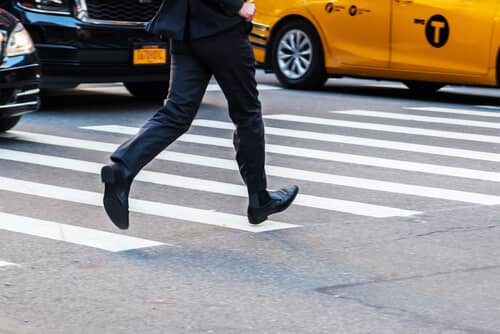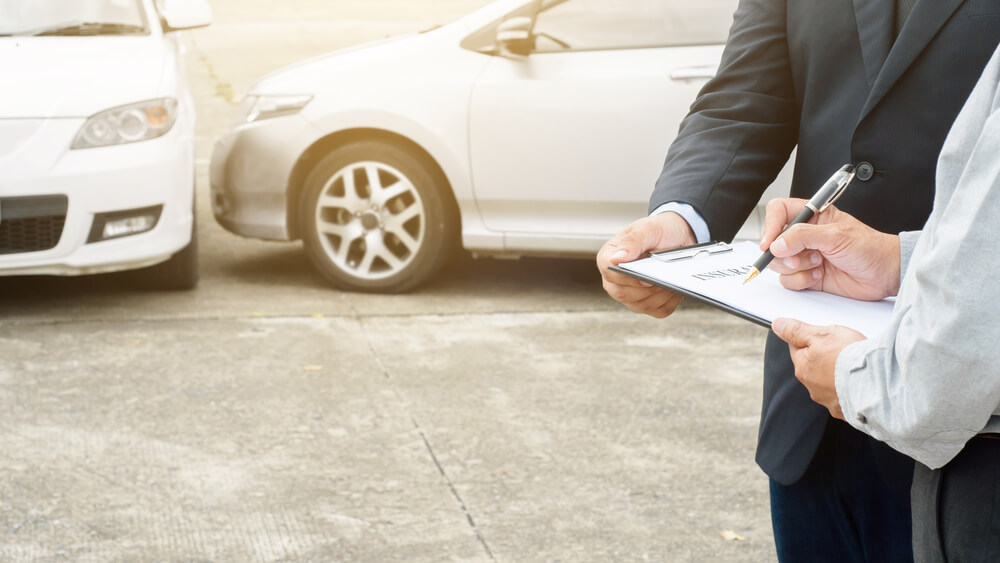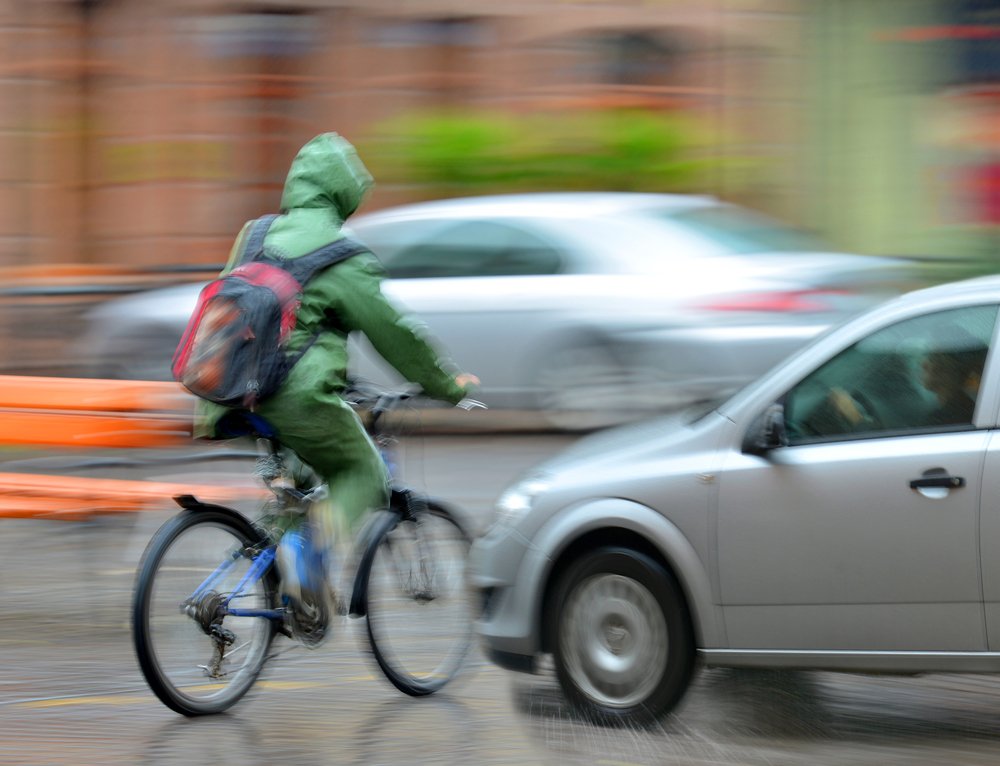Pedestrian accidents have been on the rise recently, often with devastating outcomes. Studies have analyzed the causes and severity of these incidents, revealing alarming insights.
Key Statistics:
In 2022, Insurance Institute for Highway Safety (IIHS) estimates a total of 7,522 pedestrian deaths, this value has increased by 83% since 2009. To put this number into context:
- A small cruise ship’s capacity: Many mid-sized cruise ships can carry around 7,000-8,000 passengers and crew, so 7,522 people would fill one of these ships to capacity.
- A packed high school stadium: High school stadiums across the U.S. average seating for 5,000-10,000 fans, so 7,522 would fit neatly into a bustling Friday night game.
- An entire suburban neighborhood: Many suburban neighborhoods or small residential areas have around 7,000-8,000 residents, making 7,522 equivalent to a close-knit community or small district.
- A medium-sized company: Companies like Dropbox or Spotify each have about 6,000-8,000 employees worldwide, making 7,522 roughly the size of their global workforce.
According to National Highway Traffic Safety Administration(NHTSA), in 2022 most pedestrian traffic deaths occurred in urban setting (84%), on the open road (76%) versus intersections (24%), and during dark conditions or without artificial lighting (74%).
The NHTSA reports Pedestrians accounted for 16-17% of total traffic fatalitites
Speeding and other driver negligence are leading factors to pedestrian death.
Learn more about Pedestrian Statistics.
What Causes Pedestrian Accidents?
Pedestrian accidents can occur for various reasons, often due to negligence or environmental factors. Common causes include:
- Distracted Driving
- Speeding
- Failing to Yield
- Poor Lighting
- Intoxicated Driving or Walking
Learn more about driving tips to avoid pedestrian accidents.
Types of Pedestrian Accidents
Various types of pedestrian accidents can occur depending on factors like location and driver behavior. These include:
- Crosswalk Accidents: Commonly occur when drivers fail to yield to pedestrians at designated crossings.
- Hit-and-Run Incidents: Drivers may flee after striking a pedestrian, complicating claims.
- Sidewalk Collisions: Sometimes, drivers veer onto sidewalks, injuring pedestrians.
- Parking Lot Incidents: Drivers may be less alert and hit pedestrians while maneuvering.
- Intersection Accidents: Pedestrians are vulnerable in intersections if drivers turn without checking for foot traffic.
What Should You Do After a Pedestrian Accident?
- Check for Injuries & Call 911: Get medical help immediately and request police presence for an official report.
- Exchange Information: Collect contact and insurance details from the driver.
- Document the Scene: Take photos of the scene, injuries, and other relevant evidence.
- Seek Medical Attention: Even if injuries aren’t visible, get a medical evaluation as symptoms may appear later.
- Consult a Pedestrian Accident Lawyer: To protect your rights and understand your claim, consider consulting an attorney experienced in pedestrian accidents.
Deadline for Filing a Pedestrian Accident Claim
The deadline varies based on location. For example, in Georgia, the statute of limitations for pedestrian accidents is typically two years. Missing this deadline can void your chance to pursue compensation. However, specific exceptions apply:
- Claims Against Government Entities: These often require filing within six months.
- Wrongful Death Claims: The deadline starts from the date of death rather than the accident.
- Minors and Incapacitated Persons: For minors or those unable to file due to incapacity, the two-year period starts when they turn 18 or regain capacity.
Timing of filing a case is important. The more time that passes, the harder it can be to gather evidence, locate witnesses and build a strong case. At 770Goodlaw, we advice victims to contact an attorney as soon as possible to ensure the best chances of success.
Am I At Fault For the Accident?
Determining fault in a pedestrian accident depends on several factors. Typically, drivers have a duty to yield to pedestrians, especially at crosswalks or intersections. However, pedestrians are also expected to follow traffic signals, use designated crosswalks, and avoid suddenly entering the road.
Some factors that could indicate fault in a pedestrian accident include:
- Pedestrian’s Actions: If you, as a pedestrian, jaywalked, ignored traffic signals, or entered the road abruptly without giving the driver enough time to stop, you may bear some fault.
- Driver’s Actions: If the driver was speeding, distracted, or failed to yield when required, the driver may be fully or partially at fault.
- Shared Fault: In some cases, both the pedestrian and driver share fault. For example, if a pedestrian is crossing in a crosswalk but against a signal and the driver is speeding, both parties may bear some responsibility.
To assess fault accurately, it’s essential to examine details like witness statements, traffic camera footage, and police reports. Get help from a attorney to professionally confirm fault.
Can I Still File a Claim if I was Responsible for the Accident?
Yes, in many cases, you can still file a claim even if you were partially at fault for an accident, depending on your state’s laws. In comparative negligence states, your compensation may be reduced based on your percentage of fault; for example, if you were 30% at fault, your award would be reduced by 30%. However, in states with modified comparative negligence, you may only recover damages if your fault is below a certain threshold (usually 50% or 51%). Contributory negligence states are more restrictive, as even slight fault (1%) may bar you from recovering damages.
Personal injury protection (PIP) or medical payments coverage can still help with medical costs regardless of fault. Consulting an attorney can clarify how your state’s rules impact your claim.
What Damages Can I Recover if I File a Accident Claim?
When filing a claim, you may recover damages for medical expenses, lost wages, and property damage. Compensation can also cover pain and suffering, loss of consortium, and punitive damages for reckless behavior by the at-fault driver. The specific damages available depend on injury severity, fault, and state laws, so consulting a personal injury attorney is essential to maximize your compensation.
How Much is My Pedestrian Accident Claim Worth?
The amount a claim is worth depends on a variety of factors. Use this calculator to determine your future claim’s possible settlement.
When Do I Need an Attorney?
Whenever an accident occurs, pedestrians suffer. Insurance companies are stringent in giving out compensation. As such, to maximize your profit (compensation) gained, and minimize your losses (medical payments and property repair) after an accident, always call a attorney after any accident.
770Goodlaw Accident Lawyers Can Help
Our team of experienced pedestrian accident lawyers is ready to help you assess your case and fight for the compensation you deserve. Don’t let the negligence of others dictate your future—let us be your advocate in this challenging time.







